#found some d1 screenshots
Note
We obviously don't have any real answers, but for idle speculation: what do you think Crow is on Venus for? I've seen people suggest Vex or Ahamkara reality-warping, but Crow doesn't seem depressed or angry enough for that.
Honestly my biggest question right now. I'll be a little unhinged in this post so bear with me.
Option 1, he wants to be isolated and it's been established that there are no authorised Vanguard operations on Venus so it's the most likely barren but available celestial body in the system. Going beyond the Reef is dangerous and the only thing left in the inner system that isn't yoinked by Darkness or occupied is Venus.
I think this is the most benign and basic explanation that makes the most sense for now until we know more. The rest under the cut:
Option 2, speaking of that same lore I linked, two other people went to Venus for an unknown reason: an unnamed Hunter (with an Eliksni friend) and Shayura. The Hunter was guided by the Eliksni to a part of Venus that didn't belong to the Ishtar Academy:
Hurrying up a shallow set of rubble-strewn steps, a short Eliksni bearing the crest of the House of Light pauses, gazing back at the chrome-armored Guardian moving up the steps behind him. The Eliksni looks the Guardian up and down, then motions to the stark silhouette of a gray concrete-block building rising up from the Venusian overgrowth.
"This ain't the academy proper," the Guardian says on ascent, watching the hazy sky for signs of danger. Moisture clings in glistening beads to his reflective mask; his dark hood shields him from the rest of the elements. "The hell was this place?"
The Eliksni tilts his head to the side, four eyes blinking independently from one another. "Not Human, don't know. But machine inside."
I'd assume that the Eliksni would know if it was a Vex structure, but he only specifies that it isn't human. He mentions "machine inside" which can refer to the Vex taking over, but the structure doesn't seem to be of Vex origin or the Eliksni and the Hunter would be able to recognise that. It's not exactly hard to notice their work.
Shayura came to Venus to find someone. We don't know who. It might be the Hunter in the lore (whom she killed), but it's never specified. The only thing specified is what her Ghost says:
"There are no sanctioned Vanguard operations on Venus at present," the Ghost clarifies, pivoting its cold blue eye up to its Guardian. "Why do you think he's down there?"
There's an implication that whoever she's looking for is known to work or has worked with the Vanguard.
I wonder if Shayura's Wrath lore is chronologically in order or not. Because if not, Crow would fit the description of who she's looking for. Worked with the Vanguard, went to Venus, is easily on Shayura's list of people to kill given his past.
But why would Crow be there in the first place? Maybe it has something to do with the structure described in Shayura's Wrath lore. Crow didn't fully leave the Vanguard, he just got reassigned to work with Lord Saladin in negotiating with Caiatl. Caiatl is hard at work fighting Xivu Arath's forces and the Hive in general. She even implied being willing to nuke the hell out of the Reef to kill Savathun, civilian casualties be damned. Thanks to Zavala, this plan was nipped in the bud.
So my question then would be what is Crow doing on Venus as a part of that assignment? What is on Venus, damn it? Oh, dunno, maybe... Hm.


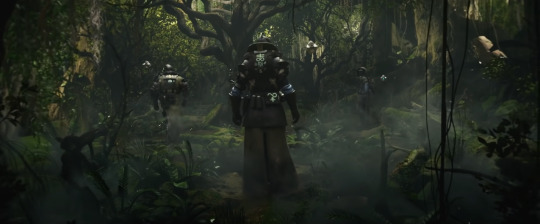


:) ?
Remember, Venus became a jungle world after the Traveler terraformed it. Now, the problem with the Venus look is that the screenshots are only from D1 and those are old. But the jungle, overgrown look with a lot of foliage is there:
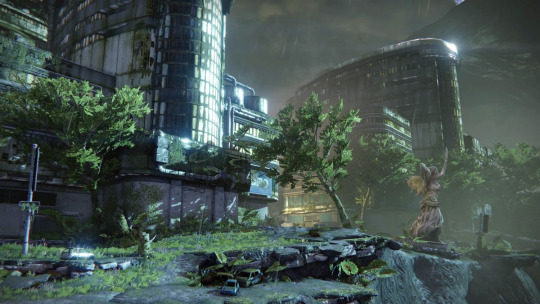
A better look might be from concept art:

The question here is: is Savathun's throne world located somewhere in the physical world or is the jungle around it just a part of the throne world itself and the actual location is elsewhere? I lean to the former and if she wanted to hide her throne world entrance somewhere, where better than on an abandoned world of Venus.
Furthermore, Bungie already reworked Venus for Destiny 2, due to Vault of Glass. The textures are there, the loading screen is there, orbit look and music, everything is already transferred to D2. Would be a shame to only have it exist as entry to Vault of Glass. Now, I don't think this necessarily means that the entirety of Venus will be back, but some other smaller part of it, perhaps. There's been a lot of Venus mentions lately, starting from it literally being back as a part of the raid.
For more unhinged hints: Venus is highly sulfuric, something which is mentioned in most lore about Venus, including this week's mention of Crow being there. Witch Queen Warlock armour features many references to sulfur:
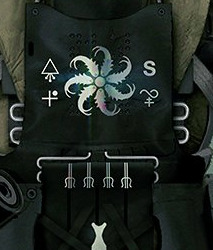
"S" is the symbol for sulfur, 16 is its number in the periodic table and 32.066 is its atomic weight.
Venus is also symbolical for Savathun. Venus is the only planet named after a Goddess and all of its features are named after Goddesses, of which three appear in Destiny: Ishtar Sink, Maat Mons and Pomona Mons. Quite ironically, Maat is an Egyptian Goddess of truth and justice, while Pomona is a Roman Goddess of gardens. Ishtar (Inanna) is more or less the same as Venus mythologically, and both have very close ties to the planet itself as was observed by the ancient people, which is why the planet was named after them.
Best for last: ancient Greeks considered Venus to be two separate celestial objects because of how Venus sometimes appears early in the morning (morning star) and sometimes early in the evening (evening star). They eventually realised that it's the same object, but they continued using two words to describe it: Phosphoros and Hesperos. Its generally mostly used name was Phosphoros which means... Light-bearer. It's also where the name for the element phosphorus came from. Both phosphorus and sulfur are very much tied to alchemy, which is a huge theme for the Witch Queen. Phosphorus also precedes sulfur on the periodic table (with number 15) and was, alongside sulfur, instrumental in the alchemical search for the Philosopher's stone.

^ This symbol from the same Warlock armour refers to the Philosopher's stone: this is a symbol of philosopher's sulfur. Another related symbol also appears on the Warlock armour that relates to sulfur:

So why is Crow on Venus? Maybe he just wants a place where he can be alone in the world to process what happened. That's fair.
And maybe it's a part of the assignment to find Savathun's throne world because at this point, we all know that to kill a Hive God, they must be killed in their throne world. If the plan is to kill Savathun, and Caiatl is very much into that plan, she is probably looking for the throne world. Crow may be the one to find it. And perhaps someone else has already found it before, if we consider Shayura's Wrath lore.
Okay, I'm done being insane for today.
#destiny 2#destiny 2 spoilers#season of the lost spoilers#crow#venus#savathun#witch queen#lore vibing#long post#ask#i genuinely did not consider venus until this lore today made me go feral from overthinking it#but like. the jungle... fits#and there's no sense in her throne world entrance being on earth because it would've been found earlier#but venus? abandoned and overgrown? yeah.#or maybe i'm just completely off the mark#but weird speculation be upon ye
38 notes
·
View notes
Photo

Want to be featured here? Head to this page and fill in the form!
See what this is about here, or if you’re using the app here.
What’s your fannish ID?
hehearse - it's a hearse that is giggling :D which probably describes my art the best
What types of fanworks do you create?
I do art! Art is great, not only i don't need to figure my way around words in any language, i can ALSO make people sad (or happy) with just one pic, they can figure out the story (or imagine one) themselves!
What are your favourite types of fanworks, when you're not creating?
Art is obviously there since i draw, i am biased like that; i love fics with my whole heart, ficwriters are a gift to any fandom! But that's probably the extent of my knowledge about other fanworks... (though people taking super pretty high resolution screenshots are a gift to anyone in need of references of course!!!)
What do you like in particular about this fandom?
When i was Involved it felt cozy and homely!! Smaller fandoms in general feel nice. Matt and Foggy's interaction (both romantic and platonic) are always great - and since i'm mainly coming from mark waid's daredevil it hits Hard... And the theme of matt Trying to be a good friend.... and the uncertainty "will he come back alive" is delicious. AND foggy's family adopting matt and being HIS family too is.. /clutches chest/ (Also ALSO the fake relationship for the 10 year anniversary at uni fics for daredevil are some of the most fun interpretations i've read)
Do you like participating in fan events?
Yeah!! Especially the summer ones - though they weren't easy because of uni, the gifting day sometimes aligned with my birthday so an extra gift hehe. Also giving people something that i too care about is a nice feeling :")
Do you interact a lot with other fans?
Not currently! I do hope to come back to daredevil fandom one day because matt lives in my heart and i STILL have feelings for him. ;w;
Is there any particular piece you'd like to showcase for this post?
https://hehearse.tumblr.com/post/169391810263/%D0%BC%D1%83%D0%B7%D1%8B%D0%BA%D0%B0-hanged-man-upright-suspension ! it's one of my personal faves since i do love angst a lot AND i love waid and samnee's daredevil
Do you have other fandoms you'd like to talk about?
the obvious one is the witcher because it's all i draw right now - and... both main characters became mutants in their childhood and went through The Training To Fight Evil, both have Complicated Love Life, both have heightened senses.... you know. But ALSO hawkeye went hand in hand with daredevil for me, and i personally believe that kate could be great friends with foggy (and they both could be constantly disappointed in matt and clint)
Where can your fanworks be found?
https://hehearse.tumblr.com/tagged/Daredevil is the easiest one to keep track of! :)
Thank you, @hehearse !
banner by @context-is-for-kingpins !
[ID on a white background, four black triangles that look like spotlights from above. Each illuminates one of the Defenders silhouetted in white: Jessica, Luke, Danny, Matt. A hand on the left is holding a pen writing the words Content Creator Spotlight. There is a little Punisher skull on the pen. End ID]
16 notes
·
View notes
Photo

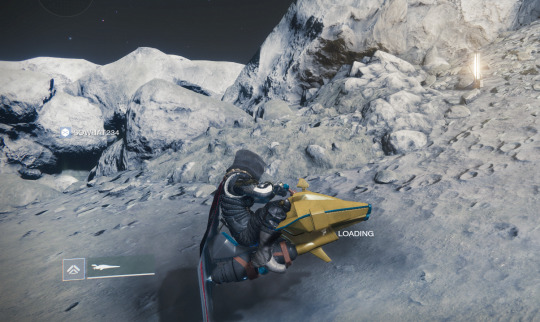
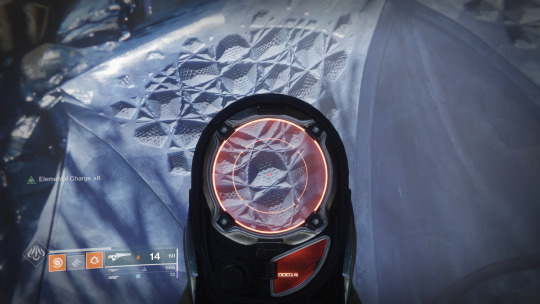

Various Screenshot Outtakes.
1. My Titan - Xander - back when I made him in D1 from... forever ago, just finally found it.
2. My Hunter - aka Exo-man-child on a Trike
3. Some of the designs on Eris’ tree - very Dreaming City.
4. Old Man forgot something.
4 notes
·
View notes
Text
EXAMINING THE ‘TRUTH’ PT. 2
Continued from this post.
We’re still examining claims https://www.themovementisalie.com made about on their front page. Next stop, this.
https://www.themovementisalie.com/evidence/
Whoo. This page is a doozy. (Not really.) As of time of typing, there are 8 articles on the page. First one.

There’s no evidence provided, actually. 3 5tas were mentioned; one cannot associate a single 5ta with the hundreds of teams in the DOA or the tens of teams in Libertas. It’s as though individual teams have individual desires and directions that are separate from their alliances, and participation in an alliance cannot be conflated with participation in a whole new poorly conceived rebel faction that doesn’t even know what it’s doing.
(I’m also amused by how nefarious Mr Odin was singled out as a member of the black suit club theMovement. I bet they do shady drug deals and occasionally run away from the LAW enforcers...?)
It’s interesting how Warenforcers were singled out in this page, too. Why does this author care so much about the possible allegiance of this one single team beyond their status as an ‘enemy’?
Next.

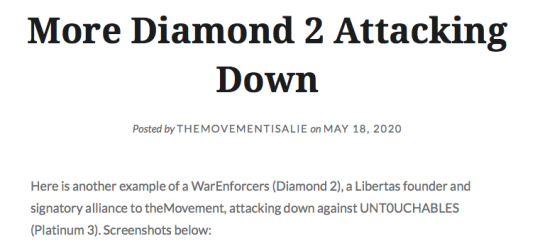


At this point I kind of get the feeling that whoever made this website doesn’t really get the point of ‘theMovement’, as they call it. (Is it a band name?)
theMovement is trying to escape ‘Dread tyranny’. theMovement is not attempting to not attack anyone in Atlas, ever. The truth of the matter is this: No one attacks in Atlas for shitty glory for no reason. You either have a castle they want, or you gate for someone they want to get to. Maybe you pissed them off? Maybe they’re trying to hit someone their own size that you gate for.
Sure. The website provided screenshots for all the attacks above, but made little to no attempt to give any comprehensive explanation as to why said enemy team could have been attacking them. Image 1 and 2 could literally be anything. A conquer attempt, a gate bubble attempt, whatever. There’s 0 context provided at all.
Image 3 seems to demonstrate how this website thinks that D2 teams should be able to fight Dread, OR ELSE. First of all, league has no relation to Atlas performance and power rank. Additionally, are you trying to control how that team chooses to play Atlas? If they are hitting down for low glory (unlikely for the reasons stated), it is their choice to do so. It’s your prerogative to deal with it. If you hate it so much, give up the castle, go pirate, and open up that team. Nice!
Image 4 suggests that a S1 and D1 team are gunning for a P2 team’s castles. It’s not theft, it’s taking a castle. If said P2 team cannot handle the cost of holding that castle, the P2 team should cut their losses and give it up. It’s not ideal and it’s not how I hope PG intended Atlas to work. But it is how it is, and hitting down is heavily incentivised. There’s no shame to be found in playing a game as it is intended to be played, which is what Harlem and SINNENN (hope I spelt that right) are doing.
It sucks to be the smaller guy, yeah. But that’s something that’s PG’s responsibility to fix. Don’t place the blame on people who’re just playing the game.

Interestingly, you may also notice that none of the teams indicated are listed on the list of teams that theMovement (lol) officially allies themselves with. You can’t extrapolate from limited information given and conclude that so-and-so teams definitely represent the intentions of theMovement. You’ll notice that if all these teams were to work under the mantra of theMovement, it’d be pretty hypocritical, as that would probably fall under being controlled by some evil overlords etc. etc.
My larger issue with these ‘evidence’ pages is that the website pins the term ‘theMovement signatory alliance’ on all these teams without definitive proof with the aim of calling these teams out simply for hitting smaller teams...which is the current encouraged meta in Atlas. It’s terrible for smaller teams, yes, but Imo you’re directing your frustration at the wrong target- if PG would punish hitting down more and incentivise hitting up further, you’d face less attacks from larger teams.
In the meanwhile, don’t forget that it’s your personal choice to hold on to castles you’re getting hit at. Despite Atlas being so inactive, you cannot forget that the benefits you get from each castle come at the cost of the troops you need to field to protect it. If it becomes too much such that you don’t think it’s worth it anymore, consider dropping them.
If you keep them, I don’t think you have the right to complain about the troops you lose defending them. Moral compasses aren’t exactly encouraged to be able to do well in Atlas. For larger teams, it’s either you bubble small gates to get to glory targets/conquer castles, or you sit pretty on your super safe internal castles and swap guards for glory all day, which is definitely not how Atlas was intended to be played. For smaller teams, you hold gates and bleed troops for bigger teams for marginal infra bonuses and to ostensibly ‘help your alliance’. Or you can choose to drop the castles and lose what marginal infra bonuses you have, which will cause you to bleed players/not be able to recruit.
There’s no good choice, really.
Again, don’t blame the players. Blame PG.
- To be continued -
1 note
·
View note
Text
Atlus’s Forgotten PS2 LAN Game Adventure

As with every developer that’s been in the business for a while, Atlus has its fair share of skeletons in the closet in terms of projects that never got off the ground, both in terms of games cancelled after being formally announced and those that not even got past the prototyping stage. Take this little PS2 venture that caused a minor stir when it was rediscovered in 2010 thanks to the above scan posted to the venerable Lost Levels forums. There’s very little to go off of here, but the premise is at least interesting, both in the context of Atlus in 2000 and where console video games were at in general with respect to utilizing networked multiplayer of any variety, local or online.
For a long time, it seems like this piece was the only known English coverage anybody had to go off and as a result, fueled a fair amount of speculation as to what it could’ve possibly been. Cerberus can clearly be seen in the screenshot here, leading people to believe if it was a cancelled game or something that evolved into, say, Shin Megami Tensei: Nine, given that game’s roots as an online game. While there’s at least some logic to these theories, they’re ultimately pretty off the mark. The reality behind this project is ultimately a little more complicated, which is why today I’m going to set out to compile what’ll likely be by default the most exhaustive (but still ultimately sparse) overview possible in English based on original Japanese research, with some details contradicting the contents of the PlayStation Magazine article.

For starters, this project had no formal name, but the photograph you see here from Game Watch Impress’ article at the time shows that, for display purposes, Atlus gave it a sexy title that literally translates to “Network Features Research and Development Piece.” (Japanese: ネットワーク機能研究開発作品, or Network Kinou Kenkyuu Kaihatsu Sakuhin) Developed by Atlus R&D1, Atlus’ primary development arm before it was split across Persona, Shin Megami Tensei, and Etrian Odyssey, it was indeed shown off at Tokyo Game Show 2000 Spring, back when the convention was held twice a year in the spring and fall, rather than once yearly in the fall now, and appears to have been playable by both the press and the public.
As the name entails, it was a prototype of sorts designed to test the LAN networking features that the PS2 was capable of. According to that Game Watch Impress article, a total of five consoles were networked together; four of these were dedicated to an individual player each, while the fifth acted as a server that connected the other units together. That fifth PS2 also served as a spectating camera that could see what all of the players were doing as an outside observer and project the action on a separate screen. Like the PlayStation Magazine article mentions, Game Watch Impress was unable to actually see or glean any details about what sort of networking setup was utilized, although as later evidence will indicate, it can be safely assumed that it was indeed running on actual PlayStation 2 hardware, especially given that the show took place soon after the console’s Japanese launch. Unlike what PlayStation Magazine implies, however, a representative explicitly told Game Watch Impress at the time that no concrete decision had been made one way or the other as to whether it would ever be sold as a proper retail game, which obviously never happened.
Gameplay details are sparse, but not wholly unknown. Famitsu, as one might expect, was also present at the show and discussed the prototype very briefly in an online article. To hear them tell it, each player took control of Cerberus as they fought monsters that appeared in the gameplay field. Game Watch Impress’ article also mentions that it was a competitive multiplayer game, which can be surmised from the screenshot in the scan up top. It can pretty readily be guessed that it was a simple game where players competed to defeat the most monsters within a specific time limit.
As for screenshots, I did a lot of digging and could only find one small, but direct feed picture still lying around the Japanese Internet that I found in ASCII’s coverage of the event here. Given the spotty nature of old online Japanese game coverage, I’m posting it below as well for posterity so that it can hopefully be forever preserved.

Japanese press coverage of this tech demo stops here with it seemingly not ever being publicly shown off again. The story doesn’t quite end here, however. While at the time, Atlus’ public explanation for this prototype was that it served as a LAN gameplay test, it actually also served as a different testbed of sorts during Shin Megami Tensei III: Nocturne’s development. This wasn’t known at the time because the game was in a very nascent stage of development, with Atlus having only announced its foray into PS2 games a few months prior to Tokyo Game Show 2000 Spring. But in a making of documentary for the game contained on a rare DVD by the name of “Shin Megami Tensei III: Nocturne Special DVD: Souzou no Kiseki” (Japanese: 真・女神転生III NOCTURNE SPECIAL DVD ~創造の軌跡~), none other than Katsura Hashino discusses this prototype years after the fact as a quick snippet of footage is shown. I’ve taken the liberty of subtitling the brief segment in question, which you can view below.
youtube
Essentially, in addition to testing the PS2′s LAN capabilities, the prototype also served as Atlus’ first real stab at creating polygonal assets for Shin Megami Tensei, not just in terms of how to bring Kazuma Kaneko’s demon artwork to life, but also how to animate it and make it move around in real time before ultimately arriving at the cel shading used in the final game after additional experimentation.
This is the point where the informational well ultimately runs dry for now. Whether development on this prototype proceeded much past the Tokyo Game Show exhibition is unknown, but unlikely. As for whether this demo would go on to impact Shin Megami Tensei: Nine’s development, given its initial announcement as an online Xbox game, is also disputable. Nine itself wasn’t announced in any capacity until August 2001, well after this initial showing of the PS2 prototype. While it’s likely that these experiences in developing a networked game helped inform initial development of Nine, Hashino’s wording here seems to imply that this prototype was squarely used for development work on the PS2 specifically and while Nine actually does appear in this documentary, it doesn’t otherwise get discussed in this context.
While I’m still curious enough myself to keep pursuing this and see if I can track down some sources who might know more about this prototype, as of now, this is quite possibly all that’s publicly known about it. Should I glean any more information, you can bet I’ll update this post accordingly, but in the meantime, hopefully this clears up what’s definitely been one of the more murkier pieces of Atlus development history.
Thanks for reading!
-Pepsi
#Atlus#Shin Megami Tensei III#Nocturne#PlayStation 2#Tokyo Game Show 2000 Spring#LAN#R&D1#Katsura Hashino#Famitsu#Game Watch Impress#ASCII
42 notes
·
View notes
Text
Toy Project: Fortune Telling from Super Mario Bros. DX
I recently moved out of my country and I've been staying at a hotel and turns out I got bored so I started just trying random stuff to try to have fun while I get my own place.
So I remembered... back in the day, I don't remember how, because I never actually had a gameboy of my own, but I remember I managed to play Super Mario Bros. DX for the Gameboy Color. I remember that port, a pretty good one at that, because of the fact that not only does it recreate Super Mario Bros. on the Gameboy Color really well, no matter the small screen size of the system itself which leaves a lot to desire to the NES's resolution, but because there's a massive amount of extra content added to the original SMB trip.
There's time trials, You vs. Boo mode, multiplayer modes, hidden red coins, hidden yoshi eggs, a new map screen and a lot of other random smaller stuff, such as Gameboy printer stickers (in case you have one of those laying around lmao), a day planner in case you're still rocking your gameboy color as a PDA 20 years later, and even a fortune telling minigame. It's awesome!
The fortune telling minigame
You see, for some strange reason I have this weird kinship for the fortune telling minigame... I always liked the fact that the little messages you get are so satisfying to read, the little jingle that sounds before the message is displayed sounds so exciting, and the fact that you can even get extra lives for the main platforming game if you have good luck and you get a nice fortune :)
So here's the challenge:
I want to recreate, for fun, the fortune telling minigame in a web application.
Right off from the bat, this is what I'm gonna need:
A dump of all the fortune messages that Nintendo put in the game.
A dump of all the graphics and sound used in the fortune telling minigame.
A database schema to store traffic data and fortune content data, so people can login, see and share fortunes, ideally with facebook.
An admin interface to add or edit the fortunes on my database easily (nice to have, and it involves making a User model too. I can do with SQL only though)
A web server that displays the actual frontend for the fortune telling minigame, does the "random shuffling" process, handles user traffic, then shows the users' fortune as an actual document that they can see on a browser (Ideally I'd expose it as a RESTful API too, but I don't want to do that at the moment, and for the sake of having a controllable scope for this project, I'll focus on doing everything as a rails web application)
TL;DR: Here's is the finished product: Have fun
This is gonna be fun :)
Dumping the fortunes
First of all, unfortunately I didn't manage to find a complete text dump of all the available text data in SMBDX online. Bummer! I was sorta anticipating this though. I guess I have to dump the text myself.
How to dump the text off a gameboy color game though? I was puzzled by this... however, I did notice something, the font used in the fortune telling minigame is similar to the font used in other gameboy color games, like the Legend of Zeldas available for it.
For example, compare both uppercase "W"s in the words "Words and "What", respectively. It's the same typography.
So I figured out that there ought to be a parallel there. Maybe if somebody has already dumped the text off of, say, The Legend of Zelda: Link's Awakening DX, and shared their techniques online, I could use something similar to dump the text off of SMBDX into a text file.
Turns out that there's many text dumps of all the zelda games on Gameboy Color, and off of the notes in those, I found out that there's many games that use ASCII encoding for their script. ZeldaDX is one of them. You can theoretically just open a game's files on a text editor with ASCII encoding and copy the script off of that
What does this mean? It means that the ROM image of the game, which is the actual collection of all the data that composes the game and that got shipped in carts in the original release of ZeldaDX (or any game on cart, ever, for that matter), has the actual text content itself encoded with the exact same hexadecimal values that the American Standard Code for Information Interchange uses:
From here onwards things are about to get more and more technical so buckle up and enjoy the ride. If you don't yet understand terms such as "Encoding", "VRAM", why RAM is different than ROM in the GBC or any computer's architecture, or what "Hexadecimal" means, feel free to stop here and just look at the results, or shoot me a line and we can chat about it over beers :)
So let's fire up good old trusty XVI32 and look at the ZeldaDX ROM image in it using ASCII and lo and behold, what happens when we try to search for a string of text which we already know is in the game, for example, "Marin"
There it is :)
You can also use a decent text editor to open the ROM and force "Western" (or Windows-1252) encoding when opening the ROM.
So, I procured a ROM image of SMBDX off from the actual retail copy I have and that I purchased with my own money, like you also should. Then, after dumping the ROM image, from here it should be a cakewalk, right? Open the SMBDX ROM on a hex-editor with ASCII encoding and presto, right?
Well, not quite.
Unfortunately, Mario DX, for some bizarre reason, doesn't use ASCII encoding for its text. Strange.
My hypotesis at this point is that, well the fortunes data must be there in some kind of sequential order still, because the fortune lines are data that must necessarily be persisted in order somewhere in the ROM image to be presented to the users.
Let's pretend that we have a false encoding for a second, where the letters of the alphabet are represented by the following key:
A => A0 B => A1 C => A2 D => A3 E => A4 F => A5 G => A6 H => A7 I => A8 J => A9 K => AA L => AB M => AC N => AD O => AE P => AF Q => B0 R => B1 S => B2 T => B3 U => B4 V => B5 W => B6 X => B7 Y => B8 Z => B9 a => BA b => BB c => BC d => BD e => BE f => BF g => C0 h => C1 i => C2 j => C3 k => C4 l => C5 m => C6 n => C7 o => C8 p => C9 q => CA r => CB s => CC t => CD u => CE v => CF w => D0 x => D1 y => D2 z => D3 ' ' => D4
Based on that assumption, and unless SMBDX is doing some shifty on-the-fly uncompression thing to the ROM image (!!!), based on the fact that we already know that there's a message in the game that reads: "With a Fire Flower", and that the data has to necessarily be in that order somewhere in the rom, we should expect to find a sequence similar to the following data somewhere in the ROM:
B7 C2 CD C1 D4 BA D4 A5 C2 CB BE D4 A5 C5 C8 D0 BE CB W i t h a F i r e F l o w e r
The problem is, though, that we don't know for certain that the game stores its alphabet starting from uppercase A, with value A0... it could be any other value for all we know.
So to try to get a bit more clarity at this point we can use a hearty good old emulation debugger. If we fire up the ROM on a good-ass old emulator (in this case, I'm using nocashgmb), you can see the state of the Gameboy Color's RAM on runtime. Nice. We can trigger a fortune inside the fortune telling game, then inspect the memory to find out what data is actually getting read and from where:
If we take a look at the first uppercase W when we triggered a fortune it shows that the data comes from address 99C1 in the Gameboy Color RAM (look under Map Address)
So let's use a hex-editor to Goto address 99C1 and we find from offset 99C0
8D D6 E2 ED E1 1D DA 1D C5 E2 EB DE 1D C5 E5 E8 F0 DE EB
Look at the following screenshot:
Notice something interesting here? Probably we got the jackpot ;)
What are the giveaways?:
Notice how there's a lot of instances on this string of hex values of the value 1D. Why could that be? Could it be some kind of separator? Or delineator? What about... if it was a representation for typographical space?
Notice how the value C5 appears two times. The character F also appears twice on the phrase, on "Fire" and "Flower". Coincidence? I think not.
It seems to me that the string of hex values we found translates very well to:
8D D6 E2 ED E1 1D DA 1D C5 E2 EB DE 1D C5 E5 E8 F0 DE EB W i t h a F i r e F l o w e r
Some other thing that I noticed is that the lowercase values seem to be incremental and alphabetically ordered (notice at the values representing 'l' and 'o' and how they seem to be in sequence when you interpolate 'm' and 'n' between them, exactly in order going from E5 to E8), yet the uppercase values don't seem to follow the same order. I may be mistaken though.
So perhaps we can build a translation table from Mario-encoding to ASCII by deducing it from the debugger, then input it into a hex editor that can do custom translation tables, and hopefully try to deduct the rest of the code from there. We could throw out some ruby for this:
#!/bin/ruby LOWERCASE = { } ASCII_LETTER_a_OFFSET = 97 offset = 0xDA (0..25).each do |i| LOWERCASE[($ASCII_LETTER_a_OFFSET + i).ord.chr] = offset+i end $LOWERCASE.each do |k, v| puts "#{k} => #{v.to_s(16).upcase}" end
Which produces this table:
a => DA b => DB c => DC d => DD e => DE f => DF g => E0 h => E1 i => E2 j => E3 k => E4 l => E5 m => E6 n => E7 o => E8 p => E9 q => EA r => EB s => EC t => ED u => EE v => EF w => F0 x => F1 y => F2 z => F3
So far so good. Notice how it perfectly syncs with the example fortune.
Let's try to see how this plays out in a hex editor before we move onto the uppercase characters. Let's open the Rom on XVI32.
A quick tangent: of particular interest, notice how there's a string of perfectly good ASCII text at the beginning of the ROM file, showing the game's title and key. Longtime experience with Wii hacking and Nintendo DS and 3DS fidgetry has made me understand that since a forever, Nintendo has always liked to assign a unique alphanumeric code to each and every title that releases on their console. They call that code the TITLEID. I can see that SMBDX is AHYE. A quick look at the game's product ID on a site like GameFAQs seems to confirm that:
So there's a feature on XVI32 called character conversion that one can use to make XVI32 follow a custom encoding instead of ASCII when trying to visualize the data inside a file. This fits perfectly with our use case that we want to see the text in Mario-Encoding, which we have already deduced. Let's try to input our conversion table there:
Turns out XVI32 has a format that it uses to exchange conversion table data called XCT. This is a simple format which can be created from plaintext consisting of n different lines denoting a semicolon-separated pair of translation values, one per each line. We can adapt our ruby code to produce an xct table very easily, associating our values on the reverse order, so to speak.
For example, we have determined that 'a' (ASCII hex 61) corresponds to Mario encoding 'DA', our first translation pair in the xct table would read: DA;61
Let's use the code that we used before and modify it a bit so it dumps an xct table for us:
#!/bin/ruby LOWERCASE = { } ASCII_LETTER_a_OFFSET = 0x61 offset = 0xDA (0..25).each do |i| LOWERCASE[($ASCII_LETTER_a_OFFSET + i).ord] = offset+i end $LOWERCASE.each do |k, v| puts "#{v.to_s(16).upcase};#{k.to_s(16).upcase}" end
The resulting xct table, so you don't have to run this script, is here.
Which we can then load into XVI32 for conversion... and once we do that, lo-and-behold:
And from here it should be pretty easy to decode the uppercase alphabet that Nintendo used for this game:
#!/bin/ruby UPPERCASE = { } ASCII_LETTER_A_OFFSET = 0x41 offset = 0xC0 (0..25).each do |i| UPPERCASE[($ASCII_LETTER_A_OFFSET + i).ord] = offset+i end $UPPERCASE.each do |k, v| puts "#{v.to_s(16).upcase};#{k.to_s(16).upcase}" end
Yes, I know, I didn't bother to modify the original code to integrate both cases and just ran one for uppercase alphabet, and another one for lowercase. I was lazy xD.
The final fortunes content, with a bit of formatting and retouching, is here.
Getting the GFX and the Sound
Fortunately it was really easy to find the graphics for the fortune telling online, since sprite ripping is fairly easy to do and has been commonplace since the dawn of the commercial internet and emulation (credits to spriters-resource.com).
The sounds weren't as easy to find since the Result, option select and option opening sounds weren't as interesting as to warrant somebody posting them online in wav format for other people to download. I didn't manage to find them, but not to worry, this is a simple sound capture job. VBA-m, a popular gameboy emulator, has screen and sound recording features. After sound capture, it´s a simple edition job. Audacity is a great tool for this.
But anyway, I had to rip the sound effects that come after you get your fortune, because those weren't available anywhere. That was a simple audio capture and then editing with audacity. My audio collection is available here.
Developing the app
Now that we have this, we can jump into development of the actual app! Oh joy!
I decided to architecture the application as a standard server request-and-response cycle. I kind of had to take a bit of time to think about this. Do I develop this in the traditional way, using a server and a database with a request-response loop, or do I do it on the clientside? After all, doing everything clientside is pretty hot these days... But the argument that having a relational database available to add extra fortune messages is too compelling to ignore, and backend languages are still in my opinion more amicable to that purpose than just doing everything on frontend. I will eventually make this app more robust clientside in a version 2.0.
These are the design tenets:
A web server displays the fortune selection page, which should have the necessary design to play audio and display animated content (without plugins, mind you! Modern Web is awesome!).
On click, the frontend performs an animation, then the user gets redirected. The user's traffic is intercepted by the server, which makes a dice throw and shows the user's result, with the corresponding audio and graphics according to the result.
The pages in the site should be responsive so it works well on different viewports, even smaller screens. The web server should be able to connect to a relational database to retrieve the fortunes.
The server should be able to retrieve the fortune text off of a relational database.
So I decided to go with a simple Ruby stack for this, with the Sinatra framework for coding the server, PostgreSQL on the database, heroku as the platform (I like PaaS and heroku has amazing, free support for PostgreSQL out of the box).
On the frontend I use some small parts of CSS for webkit animations, transitions to animate all the assets I got off the ROM, and rotations/translations to position the clickable elements of the page in a circle formation, and the Javascript audio API to play sound.
A snag that I ran into quickly is that I need to add another media query to order the elements in another way on very small screens (the responsiveness is achieved purely through media-queries). Plus the animation is fidgety and not compatible in all browsers because I'm tweening the content property of an img element in the page for animation and this doesn't play well with browsers, or rather, doesn't produce smooth-enough animation. I think that I will look into canvas in version 2.0 of the app to handle all the gfx.
And finally, I needed a way to populate my database quickly with all the text I dumped from the ROM. I made a quick sql script for that, which I placed on the project's repository. Vim proved very good for this, parting from the previous txt file with the raw Fortune strings:
CREATE TABLE Fortunes(type_id integer NOT NULL, content varchar(40), created_at timestamp DEFAULT current_timestamp, updated_at timestamp DEFAULT current_timestamp); INSERT INTO Fortunes VALUES (1, 'With a Fire Flower you''ll beat Bowser.'), (1, 'Fortune awaits you in the clouds.'), (1, 'Fortune will lead you to Yoshi.'), (1, 'Look below to find what you seek.'), (1, 'Good friends bear good news.'), (1, 'Southerly winds bring sunny skies.'), (1, 'Kindness given is returned tenfold.'), (1, 'Good news is due from a loved one.'), (1, 'Good things come from hard work.'), (1, 'Soothing music soothes the soul.'), (1, 'Keep a good grasp Fortune will last.'), (1, 'Worries naturally melt away.'), (2, 'Stomp a shell and scores will swell.'), (2, 'Pipe cleaning reaps rewards.'), (2, 'An eye to the sky reveals Red Coins.'), (2, 'Keep your head up Find what you seek.'), (2, 'A party of three brings good luck.'), (2, 'Luck arrives with the easterly wind.'), (2, 'Express yourself with written word.'), (2, 'Seek out the one who thinks of you.'), (2, 'Active bodies breed active minds.'), (2, 'To create music is to create joy.'), (2, 'You shall achieve great victories.'), (3, 'Enemies lurk in watery depths.'), (3, 'Fortune is hidden in bricks unbroken.'), (3, 'Today is your day to win the race.'), (3, 'Boxes may contain clues to the quest.'), (3, 'Victory is yours in the coming race.'), (3, 'Beware of winds from the west.'), (3, 'Feelings shared will be understood.'), (3, 'He who thinks of you is beside you.'), (3, 'Imagination is a wonderful toy.'), (3, 'Old tunes bring new fortune.'), (3, 'Trade high scores to set new goals.'), (4, 'Stomping on spikes leads to sore feet.'), (4, 'Careless footing causes one to fall.'), (4, 'Kicked shells may bounce back.'), (4, 'What you seek is right beside you.'), (4, 'Sincere apologies renew friendships.'), (4, 'Storms ride in on northerly winds.'), (4, 'You will not find true love this day.'), (4, 'A VS Mode victory is not your fate.'), (4, 'Not all pain leads to gain.'), (4, 'Happy songs lift sad moods.'), (4, 'The Warp Zone speeds success.'), (4, 'Only a Challenge clears the mind.'), (5, 'Bowser''s breath engulfs the future.'), (5, 'Flying Koopas cut short success.'), (5, 'Dont count Yoshis before they hatch.'), (5, 'Leave impossible dreams to dreamers.'), (5, 'Seek answers in a friends advice.'), (5, 'Beware of pointed enemies.'), (5, 'Change old habits Yield new success.'), (5, 'Victory in a race may wash pain away.'), (5, 'Excess is a powerful enemy.'), (5, 'Favorite tunes never fade.'), (5, 'Now is the time for patience.'), (5, 'Help all in need, not just a friend.');
If you're using heroku to mount the app, it's very easy to populate heroku's postgres database through the command line by using unix redirection from the file to heroku pg:sql with the following command:
heroku pg:psql --app "the_name_of_your_app_here" < scripts/create_databases.sql
A quick note: a fast look at the main executable for the server, fortune.rb, you can notice how I'm handling connections to the database. It is a good practice to store connection credentials for your database on an Environment Variable in the server, from where I read at the moment of connection in runtime, else I default to development-credentials, which you should replace by your own if you try to run this on your machine.
Final Words
So this is it! Hope you enjoyed the ride and remember that you can check out my project and deploy it for yourself from my github [profile] (https://github.com/nullset2/smbdxfortunes).
Have fun and may you have great luck in your future! :)
#works#super mario#super mario bros. dx#gameboy#gameboy color#emulation#web development#project#fortune#luck
0 notes
Text
Detail the S.M.A.R.T of SSD
Original Chinese Version by Eric
Before writing this article, we found during testing process that performance
degradation occasionally happened to the SSD, and the S.M.A.R.T command was confirmed as the cause of this after study. This is seemingly not critical, however,it may bring serious consequence of losing data packets if the SSD is applied in those critical domains like data acquisition, while of course this bug is correctable,first let us look at the screenshot:
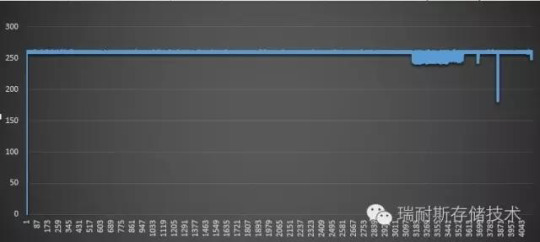
S.M.A.R.T Overview
As the short for Self-Monitoring Analysis And Reporting Technology,
S.M.A.R.T. can be read from its name with the function of fault alarm. The SSD
health condition can be monitored and the parameter values can be fed back
to the monitoring software or operation systems, in fact, most parameters are
meaningful only for SSD engineers, the end users just need to focus on some
key indexes, such as New Bad Blocks, Remaining Life and Erase Count, etc.
S.M.A.R.T information of the SSD can be obtained through some common
testing software:

SSD controller manufacturers can also provide corresponding tools:

Through the years of continuous improvements by HDD manufacturers, some
S.M.A.R.T standards are formed, however, for SSD, most S.M.A.R.T
parameters are user-defined, thus the parameters provided by every
manufacturer may be different, but generally they refer to HDD S.M.A.R.T to
set them.
The S.M.A.R.T information of SSD is saved in specific areas assigned by
firmware, it could be in the area of OP (Over Provisioning) or possibly any area
chosen by the firmware engineers, or saved with an independent table.
The S.M.A.R.T of SSD is not completely the same as of HDD, those common
testing softwares which can be got from internet are designed based on HDD,
SSD manufacturers usually make their own decisions to set S.M.A.R.T
attributes according to the characteristics of NAND Flash.
Definition of S.M.A.R.T Indexes
01 Raw Read Error Rate
This index indicates the initial health condition of NAND Flash, the data values
include correctable and uncorrectable errors.
09 Power-On Hours
The unit of measurement is generally hour, it could be minute or second, which
is defined by SSD manufacturer. Usually the time of all the three states of work,
idle and sleep are counted, some SSD solutions exclude the time of sleep by
enabling some power management functions.
This parameter shows the accumulated power on time of the SSD, it is
supposed to be 0 for a new SSD drive, while in fact the SSD manufacturers
have already used for several or dozens of hundreds of hours during the
testing process, it is just the parameter is resumed to be 0 by re-implanting
firmware after the tests.
0C Power Cycle Count
The data value of Power Cycle Count means the power on/off cycle count for
the SSD, it is usually just a few times for a new drive.
The power on/off for SSD is different to HDD, normally intense P/E cycle tests
should be done for SSD, in addition, a large number of abnormal power off/on
tests are required for military and industrial SSD to avoid the loss of mapping
table or other unreliable factors which may be brought by abnormal power off.
(3K to 10K abnormal power off/on cycle tests are done in Renice,but what
users can read from the S.M.A.R.T reports is still a few power cycle count
because the power cycle counts is cleared by re-implanting firmware after
tests.)
B8 Initial Bad Block Count
Every NAND Flash has initial factory-marked bad blocks, the SSD firmware
mark bad blocks by scanning 0xFF in the spare area of the first and the last
page of each block, no mark of 0xFF expresses as bad block, bad blocks are
managed by firmware uniformly and listed into bad block table.
Initial Bad Block Count reflects the initial health condition of the SSD on a
certain level, the larger number of initial bad blocks represents the worse initial
health status.
C3 Program Failure Block Count
When Program Failure happens to a page, the block of this page will be
marked as bad block, this sort of bad blocks is named as new bad blocks and
listed into bad block management table. Every block has limited
Program/Erase cycle, program failures or erase failures push the block into the
bad block table for centralized management. For those domains with
extremely high requirements for data security, a block with just one program
failure, erase failure or read failure will be marked as bad block.
C4 Erase Failure Block Count
The explanation is similar to C3.
C5 Read Failure Block Count
The explanation is similar to C3.
CA Total Count of Error bits from flash
This count includes Program Disturb Error, Read Disturb Error, Erase Error,
and total amount of correctable and uncorrectable error bits.
This value may looks very high, especially for the SSD with weaker ECC
capability. Taking the parameter of CB into account, we can have a rough
estimate about the ECC capability of the SSD, the larger value indicates the
weaker ECC capability.
CB Total Count of Read Sectors with correctable bits errors
This count just includes the amount of the corrected error bits, so the amount
of uncorrectable error bits could be calculated by CA-CB, the bigger the
difference between CA and CB, the weaker the error correction capability of
the SSD is, and the shorter remaining life it represents.
CD Maximum PE Count
This parameter is set according to the specs in the datasheet of the NAND
Flash, but in reality the PE cycle of NAND Flash is larger than that listed in
datasheet, e.g. the provided value is 3,000, so the remaining life gets to 0
when the erase count reaches to 3,000, but the SSD actually remains in a
healthy status. Hence this parameter is for reference of usage with the best
insurance.
CE Minimum Erase Count
Maximum, Minimum and Average Erase Count describe the erase count of
each block, the smaller the difference between the maximum and minimum
value, the better the wear leveling algorithm it represents, the average value
makes no sense.
CF Maximum Erase Count
Refer to CE for the corresponding definition.
D0 Avage Erase Count
Refer to CE for the corresponding definition.
D1 Remaining Life (%)
This index shows the remaining life of the SSD, we can guess from the
description of CD that this parameter is just a reference value, it doesn’t
represent the true remaining life of the SSD.
#ssd#solid state drive#smart#s.m.a.r.t#renice#solid state#solid drive#computer#technology#computer hardware
0 notes
Text
4 Forgotten Excel Tricks For PPC
If you are reading this post, it’s because you know that Excel saves precious time when analyzing PPC data and you want to stay up-to-date on the latest and greatest Excel tricks.
I feel the same way! The problem is that we often forget to surf the digital marketing blogs for new Excel tips because we end up spending any training time we have learning about the newest PPC product updates.
I have been overdue for a self-taught Excel training for a while, so I recently decided to take the time to look for a few new “Excel for PPC” tools and tricks. Fortunately, I did not have to go far. I knew that our Hanapin team had created several Excel resources in the past, but now they are all conveniently located on one blog page. While this mention is very clearly a shameless plug, I honestly learned new or forgotten Excel tips that are going to save me time with my PPC analysis. (BONUS: we also included some of our most popular AdWords resources because Excel and AdWords are nearly inseparable).
In this blog post, I am going to share four Excel tricks for PPC that I hope you can also use to save yourself time.
1) Grouping Average Position Data In A Pivot Table
“Group and Outline” is one of the forgotten features of Excel pivot tables. In The Complete Guide To Using Excel for PPC, there’s a great example of how we can use the Group option of pivot tables to condense average position data into ranges of positions for a higher-level analysis. Another example that I have found useful is pivoting “hour of day” data from AdWords and then grouping the hours morning, afternoon, and night (8-hour increments). This is a simple way to show a client or manager AdWords metrics as they relate to customers searching for the company or product before, during, or after the customer service or call center hours are occurring. Below, you can see screenshots of both the average position and the hour of day grouped pivots.
2) Quick Keyword Tool
Don’t you love it when someone hands you an Excel function that looks super complex, but you don’t really have to learn it if you can copy and paste it into your own document? Yeah, me too. This next formula is one of those. Here it is:
=IF(ROW(B1)>COUNTA(B:B)*COUNTA(D:D),””,LOWER(INDEX(B:B,IF(MOD(ROW(B1),COUNTA(D:D))=0,ROW(B1)/COUNTA(D:D),INT(ROW(B1)/COUNTA(D:D))+1)))&” “&LOWER(INDEX(D:D,IF(MOD(ROW(B1),COUNTA(D:D))=0,COUNTA(D:D),MOD(ROW(D1),COUNTA(D:D))))))
That’s a LOT of nested functions. Again, you don’t need to be able to rebuild this one yourself. You can take it as is and use it for quickly creating keywords based on categories and modifiers. Let’s say your company sells trendy, yet thrifty furniture. Your categories and keywords might be as follows:
Then, you simply copy and paste the formula from above into your Excel sheet and drag/copy the calculation down the column until all variations of your categories + modifiers are generated. It’s a HUGE time saver for new campaign builds.
Another example can be found in The Complete Guide To Using Excel for PPC.
3) Custom Shortcuts
Simple, yet effective. That’s the best way to describe this Excel trick. There are tools in the Excel ribbon that we use all the time – so often that we could shave minutes off our day-to-day Excel analysis if we only had keyboard shortcuts for the buttons we use frequently. Below are the steps for creating custom shortcuts in Excel. Note: the following steps only apply to Mac OSX.
The following example creates a keyboard shortcut using CTRL+Q for “trace precedents.”
To add this keyboard shortcut simply do the following:
Open System Preferences
Select Keyboard
Select the Shortcuts tab
Click App Shortcuts on the left
Click the + button to add a new one
For “Application” choose “Microsoft Excel”
For “Menu Title” enter “Trace Precedents”
For “Keyboard Shortcut” press CTRL+Q
Click Add
That’s it. CTRL+Q will now launch Trace Precedents in Excel 2016 for Mac.
I did not find a similar option for the latest versions of Excel for Windows. However, I did find this incredibly thorough post on powerspreadsheets.com that has tons of existing keyboard shortcuts as well as step-by-steps for learning those shortcuts.
4) Wildcards
This is NOT a poker reference.
Wildcards work in a variety of excel functions, several of which are described in Trick #33 of 34 Excel Tricks To Save Your PPC Life. Wildcards allow you to account for unknown characters within numbers or text. One example not mentioned in Trick #33 is using wildcards within “control F” searches. In PPC analysis, you might be turning an existing location-based campaign into a new campaign for a separate location. You’re nearly 100% certain that you changed all of the ad copy references from say, Arizona to New Mexico, but you want to be sure.
Final Thoughts
There are SO many other Excel tips and tricks in our blog as well as in other digital marketing blogs. The tips listed above stuck out to me because I have not used them recently or at all, but I can easily think of several uses for them. I encourage you to do your own deep-dive to update your Excel skill set. You might find that you’ve read most of the posts before, but you could still stumble across a few forgotten tools like I did.
from RSSMix.com Mix ID 8217493 http://www.ppchero.com/4-forgotten-excel-tricks-for-ppc/
0 notes
Text
4 Forgotten Excel Tricks For PPC
If you are reading this post, it’s because you know that Excel saves precious time when analyzing PPC data and you want to stay up-to-date on the latest and greatest Excel tricks.
I feel the same way! The problem is that we often forget to surf the digital marketing blogs for new Excel tips because we end up spending any training time we have learning about the newest PPC product updates.
I have been overdue for a self-taught Excel training for a while, so I recently decided to take the time to look for a few new “Excel for PPC” tools and tricks. Fortunately, I did not have to go far. I knew that our Hanapin team had created several Excel resources in the past, but now they are all conveniently located on one blog page. While this mention is very clearly a shameless plug, I honestly learned new or forgotten Excel tips that are going to save me time with my PPC analysis. (BONUS: we also included some of our most popular AdWords resources because Excel and AdWords are nearly inseparable).
In this blog post, I am going to share four Excel tricks for PPC that I hope you can also use to save yourself time.
1) Grouping Average Position Data In A Pivot Table
“Group and Outline” is one of the forgotten features of Excel pivot tables. In The Complete Guide To Using Excel for PPC, there’s a great example of how we can use the Group option of pivot tables to condense average position data into ranges of positions for a higher-level analysis. Another example that I have found useful is pivoting “hour of day” data from AdWords and then grouping the hours morning, afternoon, and night (8-hour increments). This is a simple way to show a client or manager AdWords metrics as they relate to customers searching for the company or product before, during, or after the customer service or call center hours are occurring. Below, you can see screenshots of both the average position and the hour of day grouped pivots.
2) Quick Keyword Tool
Don’t you love it when someone hands you an Excel function that looks super complex, but you don’t really have to learn it if you can copy and paste it into your own document? Yeah, me too. This next formula is one of those. Here it is:
=IF(ROW(B1)>COUNTA(B:B)*COUNTA(D:D),””,LOWER(INDEX(B:B,IF(MOD(ROW(B1),COUNTA(D:D))=0,ROW(B1)/COUNTA(D:D),INT(ROW(B1)/COUNTA(D:D))+1)))&” “&LOWER(INDEX(D:D,IF(MOD(ROW(B1),COUNTA(D:D))=0,COUNTA(D:D),MOD(ROW(D1),COUNTA(D:D))))))
That’s a LOT of nested functions. Again, you don’t need to be able to rebuild this one yourself. You can take it as is and use it for quickly creating keywords based on categories and modifiers. Let’s say your company sells trendy, yet thrifty furniture. Your categories and keywords might be as follows:
Then, you simply copy and paste the formula from above into your Excel sheet and drag/copy the calculation down the column until all variations of your categories + modifiers are generated. It’s a HUGE time saver for new campaign builds.
Another example can be found in The Complete Guide To Using Excel for PPC.
3) Custom Shortcuts
Simple, yet effective. That’s the best way to describe this Excel trick. There are tools in the Excel ribbon that we use all the time – so often that we could shave minutes off our day-to-day Excel analysis if we only had keyboard shortcuts for the buttons we use frequently. Below are the steps for creating custom shortcuts in Excel. Note: the following steps only apply to Mac OSX.
The following example creates a keyboard shortcut using CTRL+Q for “trace precedents.”
To add this keyboard shortcut simply do the following:
Open System Preferences
Select Keyboard
Select the Shortcuts tab
Click App Shortcuts on the left
Click the + button to add a new one
For “Application” choose “Microsoft Excel”
For “Menu Title” enter “Trace Precedents”
For “Keyboard Shortcut” press CTRL+Q
Click Add
That’s it. CTRL+Q will now launch Trace Precedents in Excel 2016 for Mac.
I did not find a similar option for the latest versions of Excel for Windows. However, I did find this incredibly thorough post on powerspreadsheets.com that has tons of existing keyboard shortcuts as well as step-by-steps for learning those shortcuts.
4) Wildcards
This is NOT a poker reference.
Wildcards work in a variety of excel functions, several of which are described in Trick #33 of 34 Excel Tricks To Save Your PPC Life. Wildcards allow you to account for unknown characters within numbers or text. One example not mentioned in Trick #33 is using wildcards within “control F” searches. In PPC analysis, you might be turning an existing location-based campaign into a new campaign for a separate location. You’re nearly 100% certain that you changed all of the ad copy references from say, Arizona to New Mexico, but you want to be sure.
Final Thoughts
There are SO many other Excel tips and tricks in our blog as well as in other digital marketing blogs. The tips listed above stuck out to me because I have not used them recently or at all, but I can easily think of several uses for them. I encourage you to do your own deep-dive to update your Excel skill set. You might find that you’ve read most of the posts before, but you could still stumble across a few forgotten tools like I did.
from RSSMix.com Mix ID 8217493 http://www.ppchero.com/4-forgotten-excel-tricks-for-ppc/
0 notes
Text
4 Forgotten Excel Tricks For PPC
If you are reading this post, it’s because you know that Excel saves precious time when analyzing PPC data and you want to stay up-to-date on the latest and greatest Excel tricks.
I feel the same way! The problem is that we often forget to surf the digital marketing blogs for new Excel tips because we end up spending any training time we have learning about the newest PPC product updates.
I have been overdue for a self-taught Excel training for a while, so I recently decided to take the time to look for a few new “Excel for PPC” tools and tricks. Fortunately, I did not have to go far. I knew that our Hanapin team had created several Excel resources in the past, but now they are all conveniently located on one blog page. While this mention is very clearly a shameless plug, I honestly learned new or forgotten Excel tips that are going to save me time with my PPC analysis. (BONUS: we also included some of our most popular AdWords resources because Excel and AdWords are nearly inseparable).
In this blog post, I am going to share four Excel tricks for PPC that I hope you can also use to save yourself time.
1) Grouping Average Position Data In A Pivot Table
“Group and Outline” is one of the forgotten features of Excel pivot tables. In The Complete Guide To Using Excel for PPC, there’s a great example of how we can use the Group option of pivot tables to condense average position data into ranges of positions for a higher-level analysis. Another example that I have found useful is pivoting “hour of day” data from AdWords and then grouping the hours morning, afternoon, and night (8-hour increments). This is a simple way to show a client or manager AdWords metrics as they relate to customers searching for the company or product before, during, or after the customer service or call center hours are occurring. Below, you can see screenshots of both the average position and the hour of day grouped pivots.
2) Quick Keyword Tool
Don’t you love it when someone hands you an Excel function that looks super complex, but you don’t really have to learn it if you can copy and paste it into your own document? Yeah, me too. This next formula is one of those. Here it is:
=IF(ROW(B1)>COUNTA(B:B)*COUNTA(D:D),””,LOWER(INDEX(B:B,IF(MOD(ROW(B1),COUNTA(D:D))=0,ROW(B1)/COUNTA(D:D),INT(ROW(B1)/COUNTA(D:D))+1)))&” “&LOWER(INDEX(D:D,IF(MOD(ROW(B1),COUNTA(D:D))=0,COUNTA(D:D),MOD(ROW(D1),COUNTA(D:D))))))
That’s a LOT of nested functions. Again, you don’t need to be able to rebuild this one yourself. You can take it as is and use it for quickly creating keywords based on categories and modifiers. Let’s say your company sells trendy, yet thrifty furniture. Your categories and keywords might be as follows:
Then, you simply copy and paste the formula from above into your Excel sheet and drag/copy the calculation down the column until all variations of your categories + modifiers are generated. It’s a HUGE time saver for new campaign builds.
Another example can be found in The Complete Guide To Using Excel for PPC.
3) Custom Shortcuts
Simple, yet effective. That’s the best way to describe this Excel trick. There are tools in the Excel ribbon that we use all the time – so often that we could shave minutes off our day-to-day Excel analysis if we only had keyboard shortcuts for the buttons we use frequently. Below are the steps for creating custom shortcuts in Excel. Note: the following steps only apply to Mac OSX.
The following example creates a keyboard shortcut using CTRL+Q for “trace precedents.”
To add this keyboard shortcut simply do the following:
Open System Preferences
Select Keyboard
Select the Shortcuts tab
Click App Shortcuts on the left
Click the + button to add a new one
For “Application” choose “Microsoft Excel”
For “Menu Title” enter “Trace Precedents”
For “Keyboard Shortcut” press CTRL+Q
Click Add
That’s it. CTRL+Q will now launch Trace Precedents in Excel 2016 for Mac.
I did not find a similar option for the latest versions of Excel for Windows. However, I did find this incredibly thorough post on powerspreadsheets.com that has tons of existing keyboard shortcuts as well as step-by-steps for learning those shortcuts.
4) Wildcards
This is NOT a poker reference.
Wildcards work in a variety of excel functions, several of which are described in Trick #33 of 34 Excel Tricks To Save Your PPC Life. Wildcards allow you to account for unknown characters within numbers or text. One example not mentioned in Trick #33 is using wildcards within “control F” searches. In PPC analysis, you might be turning an existing location-based campaign into a new campaign for a separate location. You’re nearly 100% certain that you changed all of the ad copy references from say, Arizona to New Mexico, but you want to be sure.
Final Thoughts
There are SO many other Excel tips and tricks in our blog as well as in other digital marketing blogs. The tips listed above stuck out to me because I have not used them recently or at all, but I can easily think of several uses for them. I encourage you to do your own deep-dive to update your Excel skill set. You might find that you’ve read most of the posts before, but you could still stumble across a few forgotten tools like I did.
from RSSMix.com Mix ID 8217493 http://www.ppchero.com/4-forgotten-excel-tricks-for-ppc/
0 notes
Note
Hi, just noticed you reblogged some screenshots of the Chamber of Night on the moon, which is a place i've been wondering about for a while now. There's those angular, edge-lit structures in the doorways that are clearly in the style of the pyramids/ziggurat/stasis totem door things, what do you think it's for? Is it just Hive architecture that mimics the darkness because they worship it? Or an extension of or artifact from the pyramid? If so what might it do? The only similar things to that are clarity control and the black heart, neither of which are very similar in aesthetic. I know it's just a side destination made for a handful of hidden open world triumphs and there probably will never be an answer, but i'm so curious...
I assume you're talking about this post. This one too I guess. It took me a while to think about this ask because honestly, I have no idea.
I've also been wondering about the look of this thing because it seems to be very different to how Hive lights usually are. You know, the chandeliers and glowing stuff that looks very organic. On the other hand, this light is very... Futuristic. For the lack of the better word.
The rest under the cut because of a lot of pictures:
I went down there myself to inspect it further following this ask and the material it's made of seems consistent with the rest of the stuff in Chamber of Night.

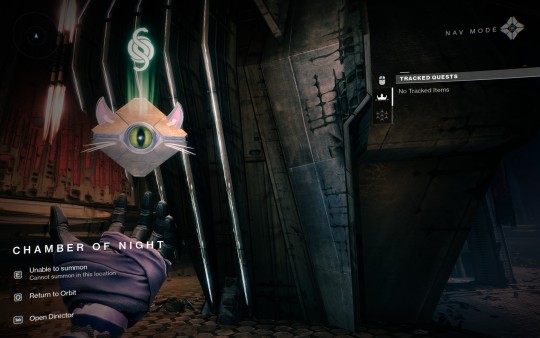
Random wall in Chamber of Night:
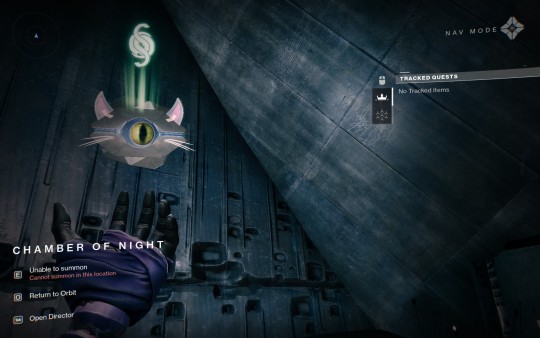
But the lights are still very odd. I presume they're supposed to mimick Crota's symbol:

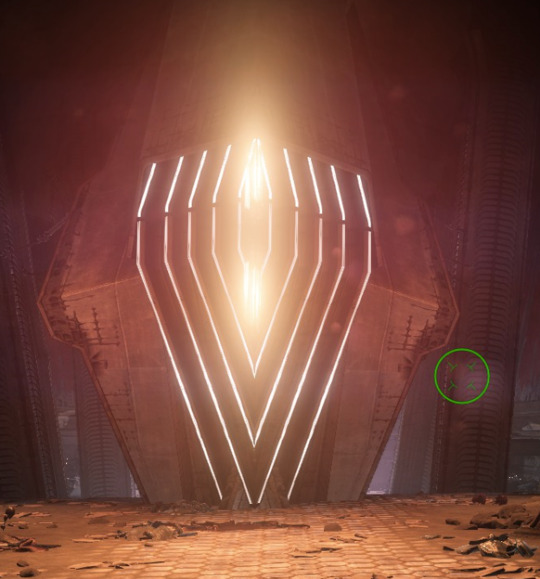
There's another similar but slightly different symbol that appears on the way down as well:

Also the best example of what I mean when I say the lights are different:

Orange is very Hive-like, meanwhile the white lights are totally different. I've always found that strange but I'm not sure what it signifies.
In D1, it looks slightly different, but it's still there. It can be seen in the mission The Wakening where the Guardian has to prevent Crota's soul to be brought back.
youtube
Here's the video from Ishtar and transcript. I timestamped it to where the object is seen (1 minute, 55 seconds if it's not working properly). Screenshot of the video:

It looks more Hive-like, but it could be a graphics thing and possibly also a deliberate choice to make it look more like Darkness stuff in D2. I definitely see what you mean, here's an example of the Stasis seal on a chest:
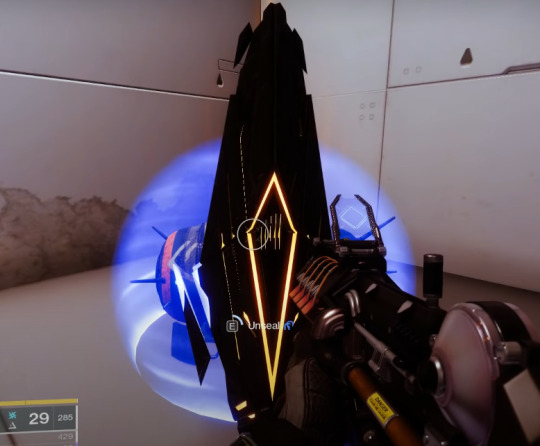
And Ziggurat aesthetics:

I'm genuinely not sure if there's supposed to be a connection and what is that structure in Chamber of Night. The Chamber of Night was the location where the Hive kept a corrupted piece of the Traveler and where we went to stop Crota from coming back (both missions in D1). In D2, it's where nightmares of Omnigul and Crota show up in Nightmare Hunts.
I'm really curious to know if that structure was like that deliberately or if it's just us looking too deep into it. But I can definitely confirm that the look of it has been bothering me ever since I first went down there in Shadowkeep. It just doesn't seem to blend in with the rest.
If anyone knows anything else, feel free to drop it in the replies/reblogs.
7 notes
·
View notes
Text
4 Forgotten Excel Tricks For PPC
If you are reading this post, it’s because you know that Excel saves precious time when analyzing PPC data and you want to stay up-to-date on the latest and greatest Excel tricks.
I feel the same way! The problem is that we often forget to surf the digital marketing blogs for new Excel tips because we end up spending any training time we have learning about the newest PPC product updates.
I have been overdue for a self-taught Excel training for a while, so I recently decided to take the time to look for a few new “Excel for PPC” tools and tricks. Fortunately, I did not have to go far. I knew that our Hanapin team had created several Excel resources in the past, but now they are all conveniently located on one blog page. While this mention is very clearly a shameless plug, I honestly learned new or forgotten Excel tips that are going to save me time with my PPC analysis. (BONUS: we also included some of our most popular AdWords resources because Excel and AdWords are nearly inseparable).
In this blog post, I am going to share four Excel tricks for PPC that I hope you can also use to save yourself time.
1) Grouping Average Position Data In A Pivot Table
“Group and Outline” is one of the forgotten features of Excel pivot tables. In The Complete Guide To Using Excel for PPC, there’s a great example of how we can use the Group option of pivot tables to condense average position data into ranges of positions for a higher-level analysis. Another example that I have found useful is pivoting “hour of day” data from AdWords and then grouping the hours morning, afternoon, and night (8-hour increments). This is a simple way to show a client or manager AdWords metrics as they relate to customers searching for the company or product before, during, or after the customer service or call center hours are occurring. Below, you can see screenshots of both the average position and the hour of day grouped pivots.
2) Quick Keyword Tool
Don’t you love it when someone hands you an Excel function that looks super complex, but you don’t really have to learn it if you can copy and paste it into your own document? Yeah, me too. This next formula is one of those. Here it is:
=IF(ROW(B1)>COUNTA(B:B)*COUNTA(D:D),””,LOWER(INDEX(B:B,IF(MOD(ROW(B1),COUNTA(D:D))=0,ROW(B1)/COUNTA(D:D),INT(ROW(B1)/COUNTA(D:D))+1)))&” “&LOWER(INDEX(D:D,IF(MOD(ROW(B1),COUNTA(D:D))=0,COUNTA(D:D),MOD(ROW(D1),COUNTA(D:D))))))
That’s a LOT of nested functions. Again, you don’t need to be able to rebuild this one yourself. You can take it as is and use it for quickly creating keywords based on categories and modifiers. Let’s say your company sells trendy, yet thrifty furniture. Your categories and keywords might be as follows:
Then, you simply copy and paste the formula from above into your Excel sheet and drag/copy the calculation down the column until all variations of your categories + modifiers are generated. It’s a HUGE time saver for new campaign builds.
Another example can be found in The Complete Guide To Using Excel for PPC.
3) Custom Shortcuts
Simple, yet effective. That’s the best way to describe this Excel trick. There are tools in the Excel ribbon that we use all the time – so often that we could shave minutes off our day-to-day Excel analysis if we only had keyboard shortcuts for the buttons we use frequently. Below are the steps for creating custom shortcuts in Excel. Note: the following steps only apply to Mac OSX.
The following example creates a keyboard shortcut using CTRL+Q for “trace precedents.”
To add this keyboard shortcut simply do the following:
Open System Preferences
Select Keyboard
Select the Shortcuts tab
Click App Shortcuts on the left
Click the + button to add a new one
For “Application” choose “Microsoft Excel”
For “Menu Title” enter “Trace Precedents”
For “Keyboard Shortcut” press CTRL+Q
Click Add
That’s it. CTRL+Q will now launch Trace Precedents in Excel 2016 for Mac.
I did not find a similar option for the latest versions of Excel for Windows. However, I did find this incredibly thorough post on powerspreadsheets.com that has tons of existing keyboard shortcuts as well as step-by-steps for learning those shortcuts.
4) Wildcards
This is NOT a poker reference.
Wildcards work in a variety of excel functions, several of which are described in Trick #33 of 34 Excel Tricks To Save Your PPC Life. Wildcards allow you to account for unknown characters within numbers or text. One example not mentioned in Trick #33 is using wildcards within “control F” searches. In PPC analysis, you might be turning an existing location-based campaign into a new campaign for a separate location. You’re nearly 100% certain that you changed all of the ad copy references from say, Arizona to New Mexico, but you want to be sure.
Final Thoughts
There are SO many other Excel tips and tricks in our blog as well as in other digital marketing blogs. The tips listed above stuck out to me because I have not used them recently or at all, but I can easily think of several uses for them. I encourage you to do your own deep-dive to update your Excel skill set. You might find that you’ve read most of the posts before, but you could still stumble across a few forgotten tools like I did.
from RSSMix.com Mix ID 8217493 http://www.ppchero.com/4-forgotten-excel-tricks-for-ppc/
0 notes